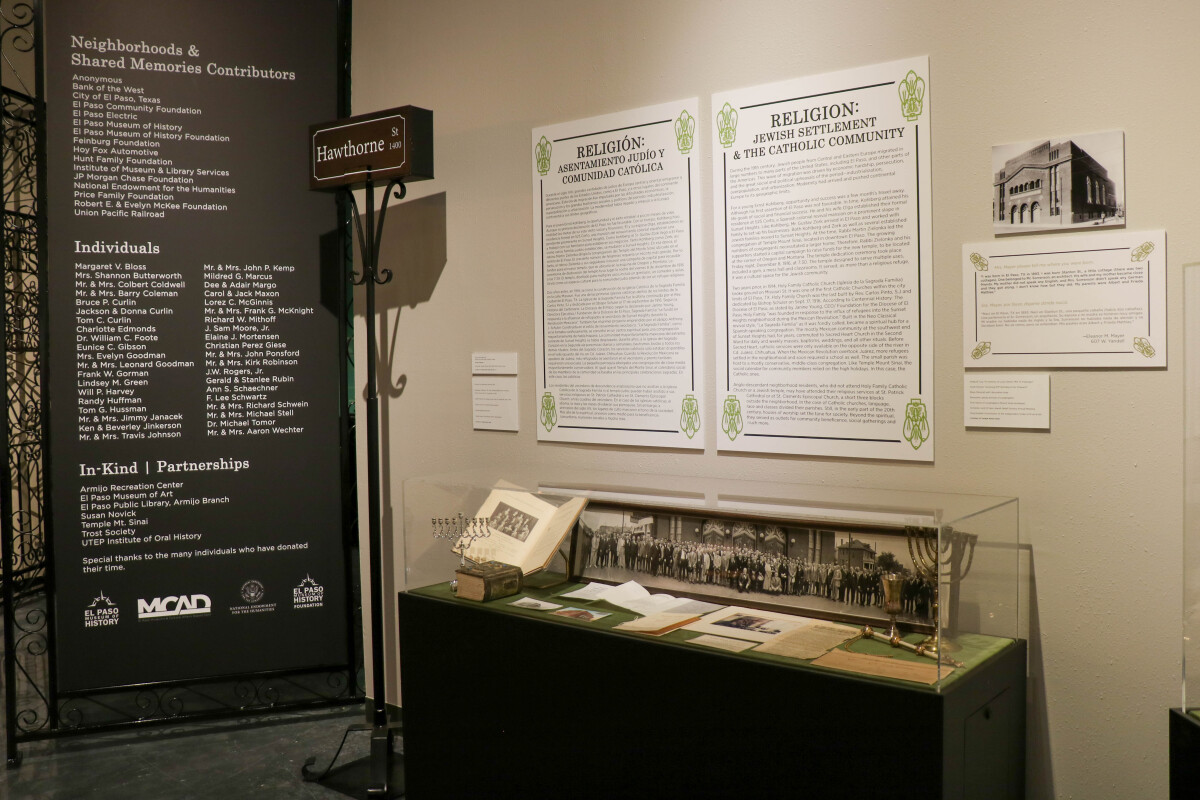Neighborhoods and Shared Memories: Sunset Heights
Vecindarios y recuerdos compartidos: Sunset Heights

Neighborhoods and Shared Memories: Sunset Heights
During the 19th century, El Paso, like many parts of the United States and other parts of the Americas, Jewish people from Central and Eastern Europe migrated in large numbers. This wave of migration was driven by economic hardship, persecution, and the great social and political upheavals of the period--industrialization, overpopulation, and urbanization. Modernity had arrived and pushed continental Europe to its geographic limits. For a young Ernst Kohlberg, opportunity and success was a few month’s travel away. Although his first assertion of El Paso was not favorable. In time, Kohlberg attained his life goals of social and financial success. He and his wife Olga established their formal residence at 525 Corto, a Spanish colonial revival mansion on a prominent slope in Sunset Heights. Like Kohlberg, Mr. Gustav Zork arrived in El Paso and worked with family to set up his businesses. Both Kohlberg and Zork as well as several established Jewish families moved to Sunset Heights. At the time, Rabbi Martin Zielonka led the congregation of Temple Mount Sinai, located in downtown El Paso. The growing numbers of congregants necessitated a larger home. Therefore, Rabbi Zielonka and his supporters started a capital campaign to raise funds for the new temple, to be located at the corner of Oregon and Montana. The temple dedication ceremony took place Friday night, December 8, 1916, at 7:30. The temple designed to serve multiple uses, included a gym, a mess hall and classrooms. It served, as more than a religious refuge, it was a cultural space for the Jewish community. Two years prior, in 1914, Holy Family Catholic Church (Iglesia de la Sagrada Familia) broke ground on Missouri St. It was one of the first Catholic Churches within the city limits of El Paso, TX. Holy Family Church was the last built by Rev. Carlos Pinto, S.J and dedicated by Bishop Schuler on Sept. 17, 1916. According to Centennial History: The Diocese of El Paso, as stated by Janine Young, CEO/ Foundation for the Diocese of El Paso, Holy Family “was founded in response to the influx of refugees into the Sunset Heights neighborhood during the Mexican Revolution.” Built in the Neo Classical revival style, “La Sagrada Familia” as it was fondly called, became a spiritual hub for a Spanish-speaking congregation. The mostly Mexican community at the southwest end of Sunset Heights had, for years, commuted to Sacred Heart Church in the Second Ward for daily and weekly masses, baptisms, weddings, and all other rituals. Before Sacred Heart, catholic services were only available on the opposite side of the river in Cd. Juárez, Chihuahua. When the Mexican Revolution overtook Juárez, more refugees settled in the neighborhood and soon required a school as well. The small parish was host to a mostly conservative, middle-class congregation. Like Temple Mount Sinai, the social calendar for community members relied on the high holidays. In this case, the Catholic ones. Anglo-descendant neighborhood residents, who did not attend Holy Family Catholic Church or a Jewish temple, may have attended their religious services at St. Patrick Cathedral or at St. Clements Episcopal Church, a short three blocks outside the neighborhood. In the case of Catholic churches, language, race and classes divided their parishes. Still, in the early part of the 20th century, houses of worship set the tone for society. Beyond the spiritual, they served as outlets for community beneficence, social gatherings and much more.